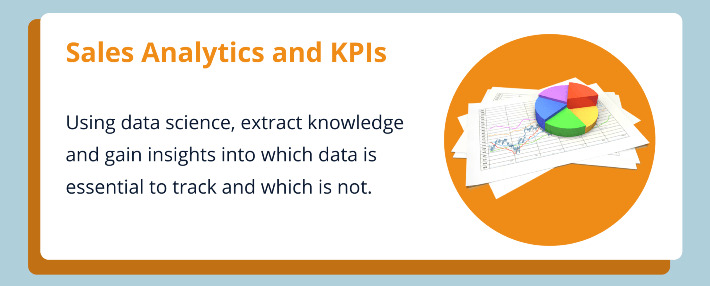Today's workforce is no longer the traditional on-site 40-hour workweek. It is rapidly changing to a remote work era that presents complex challenges to companies, sales teams, and management. These changes also affect employees. During these times, it's important to keep a work-life balance and have quality sleep to stay productive at work.
What can companies do to mitigate the loss of business and help their salespeople remain productive? They can implement sales and project management tools, workflow management, spend management, and service chatbots to keep multiple things in line. Some workers might feel isolated working from home, however, with the help of an employee tracking app, they can become more productive. Challenges must be overcome, and business processes adjusted to meet the new demands.
The most significant shift is how companies measure sales performance and which metrics they can use for their remote, digital sales force.
Track the Right Data
To grow your revenue, scale your sales team, and beat the competition, it is important that you understand data and how to track it.

That requires focusing on metrics and KPIs that contribute to profitability. Collected data that measures your sales team's every step does not necessarily affect your bottom line.
What is more important is to know which data or sales key performance indicators (KPIs) will generate more qualified leads, close more deals, and increase revenue. The most successful sales teams know that there is an art to sales, but there is also a science. Taking a scientific approach to growing sales pipelines requires the use of sales analytics.
Why are Sales Analytics and KPIs Important?
From a sales team's perspective, almost every action a team member makes can be tracked and optimized, including sending an email and making a phone call.

However, having access to and tracking more data does not guarantee increased sales. Using scientific methods, systems, and algorithms, also known as data science, enables companies to extract knowledge and gain insights into which data is essential to track and which is not.
The demand for data science is growing:
- 78% of professionals cite AI as being the innovation with the most impact
- By the end of 2020, 2.7 million data jobs will be created
- 89% of those surveyed indicated that improved data skills led to higher success for their company
Data scientists gather, interpret, and analyze collected big data through machine learning and data mining. Companies can then take advantage of all the data collected, determine whether it is essential or not, and use it to decide which sales metrics should be tracked, and how to track them.
Keep in mind that sales analytics alone are useless if you do not know what they mean or if they are relevant to what you want to measure. There is a significant difference between sales metrics and sales KPIs. Sales metrics are data points that represent the performance of an organization, individual, or team. And sales KPIs are specific sales metrics that are connected to your organization's priorities, objectives, and goals.
It is not necessary to track every sales KPI. It is, however, vital to track the right ones. Below are eight important sales process KPIs you should be tracking.
#1 Email Marketing
With more people working remotely, sales reps send out many cold emails to try to get leads because it is difficult to meet in person. This outreach via email is intended to start a dialogue with prospective customers. However, if email communications are not a two-way street, they are not sufficient. So, measuring how many emails a sales rep sends daily, weekly, or monthly is not a relevant metric by itself.

To completely understand the effectiveness of your email campaigns, it is vital to use an email marketing service that tracks opens and responses in minute detail. Today, most of the top email services track metrics such as bounce, unsubscribe, and click-through rates. This allows email marketers to calculate the overall ROI of their sales email campaigns accurately.
#2 Call Volume
When salespeople can’t engage face-to-face with leads, call activities become even more critical. The call volume sales KPI is the total number of calls made by a salesperson within a specified time as they move through the sales process. You want to track the number of calls each salesperson makes over days, weeks, and months. Although, the volume of calls metric alone is not relevant unless the outcomes are meaningful. Integrating a CRM system with telephony and using a dedicated business phone number allows for automatic logging of all incoming and outgoing calls, ensuring accurate tracking of customer interactions and improving sales performance analysis.

This KPI should be further broken down by whether the call was answered, how long the call lasted, and if there is an actionable follow-up to the call.
Not only does tracking the number of calls made let you know how active your sales reps are, but it also indicates how effective their phone outreach is compared to how much revenue each rep generates. An example of a call volume KPI is 50 calls per day or 300 calls per month for each salesperson.
#3 The Average Number of Touchpoints and Follow-Up Events
In a perfect world, a sales rep would reach out to a lead and a fruitful conversation would ensue. In the real world, salespeople must follow up often using various touchpoints to close a deal.

Touchpoints are communication channels or activities such as voice calls, emails, text messages, and video conferences through which sales reps can prospect for and engage leads.
There is a fine line between being persistent and becoming an irritant to prospects by overdoing it. The number of touchpoints required to close a sale varies by industry and is different for each business. Plus, it’s important to consider the response or lack thereof to each touchpoint before following up.
It is also essential to understand the typical length of the sales cycle for your business offerings. Higher-ticket items generally take longer to close than lower-cost products or services. Longer sales cycles will generally require more communications and follow-ups. Make sure to keep a close eye on this metric and assign a value that best suits your company.
#4 Lead Engagement Activity Level
This KPI measures engagement by viewing and tracking a lead's behavior. It should be a quantifiable number that distinguishes between engaged and disengaged leads.
Examples of lead engagement include opening an email, filling out a form, or clicking on a link to review your digital content. Higher lead engagement shows interest in your offerings, with a greater likelihood they will convert to paying customers.
The ability to measure lead engagement requires tools to track page views, time spent on a document, and clicks. For example, with FlippingBook businesses can create interactive and accessible digital content, and track lead engagement with it.
![]()
Measuring how leads interact with your content enables you to better understand your audience and make informed decisions for future content creation to improve your bottom line.
#5 Total Revenue Generated per Sales Rep
While it is important to know how many deals each rep closes weekly or monthly, it does not tell the whole story. The size of the deals and the amount of money generated from them is a better KPI to track. And the more critical metric is how each salesperson's deals impact your company's bottom line.
Suppose a rep is closing numerous small deals and not enough high-ticket sales. In that case, their overall contribution to your business's growth is limited compared to other reps who generate more income.
#6 Average Deal Cost
This metric identifies the average income generated from a deal. When analyzing your sales team’s performance, consider how much money is made with each deal.
For example, if some reps close a few low-cost deals a week while others close fewer weekly deals but bring in more revenue, the latter has more impact on your overall sales numbers.
#7 Total Sales Closed
Tracking the number of deals closed by each remote sales team member shows how well each salesperson performs with respect to their sales quotas.

It also provides valuable insights into how effective their outreach is when used with other KPIs. For example, by comparing total sales closed with other metrics, such as call volume and email marketing, you can evaluate the effectiveness of each salesperson's activities.
Many sales professionals are using services that track and report the critical sales process KPIs discussed in this article to evaluate their effect on the company's bottom line.
#8 Your Most Lead-Generating Channels
When working remotely, salespeople have fewer ways to generate leads. Previously, attending live conferences has been one of the most efficient activities to get new contacts and gather leads, and now they’re replaced with virtual events.
So knowing which channels, such as social media, email marketing, SMS messages, or voice calls, bring in the most viable leads will help you make informed decisions to guide future sales strategies. You should identify and focus on the leads' value and quality and which channels generate the highest quality leads.
The KPI for lead generation should track the number of interested prospects from each channel used.
As more salespeople work remotely, it is necessary to define relevant sales KPIs to maximize their time and efforts.The ability to be successful boils down to communication, data collection, tracking capabilities, and establishing a balanced set of sales metrics best suited for your business to grow.
Understanding your prospects' behavior and activities at each touchpoint in the sales process provides the advantage of gauging potential buyers' interest level. This enables your sales team to focus on the leads most likely to convert. Data analysis could identify leads that are not worth pursuing and could help improve prioritizations of communications between salespeople and prospects and increase closed deals.
Author's bio:





